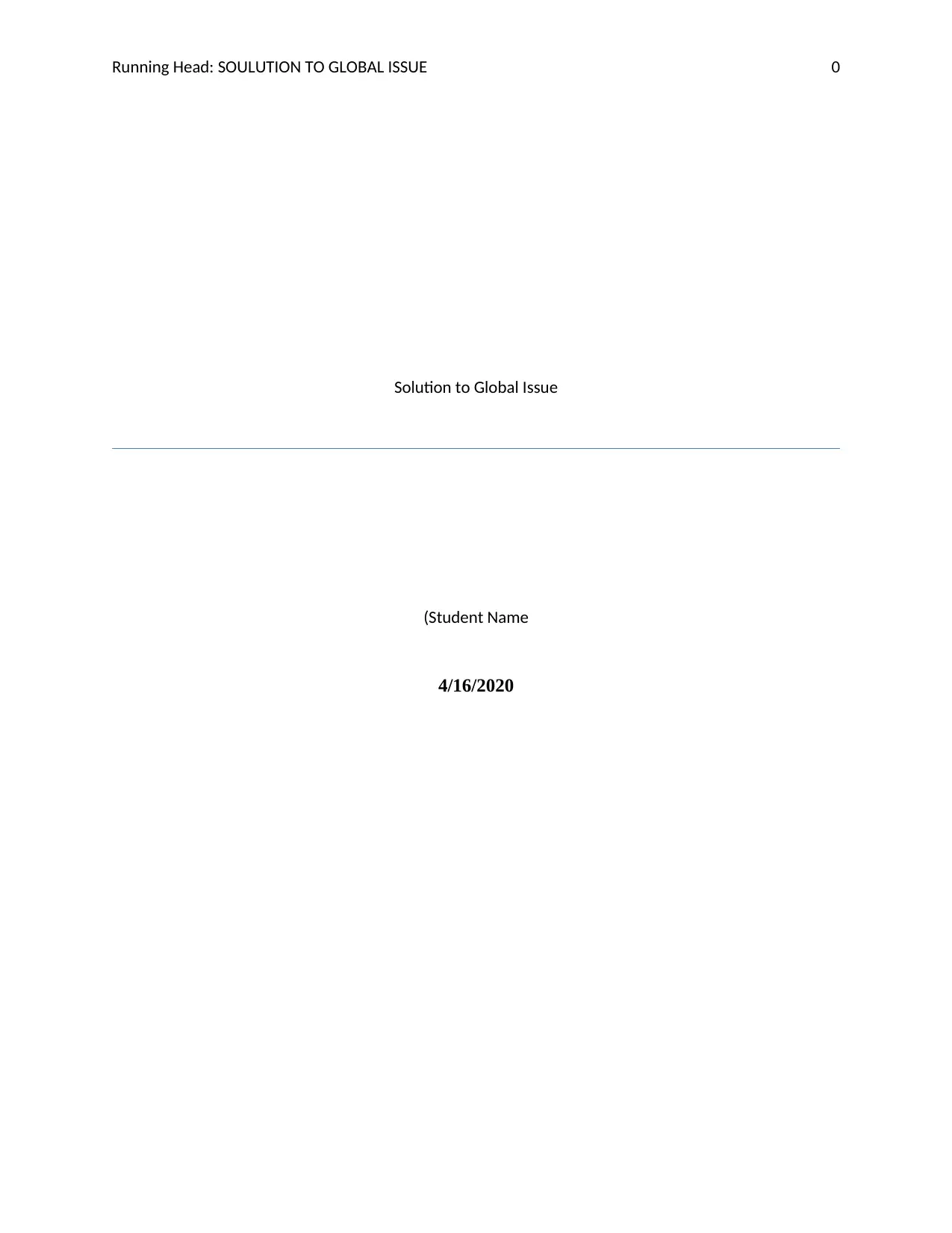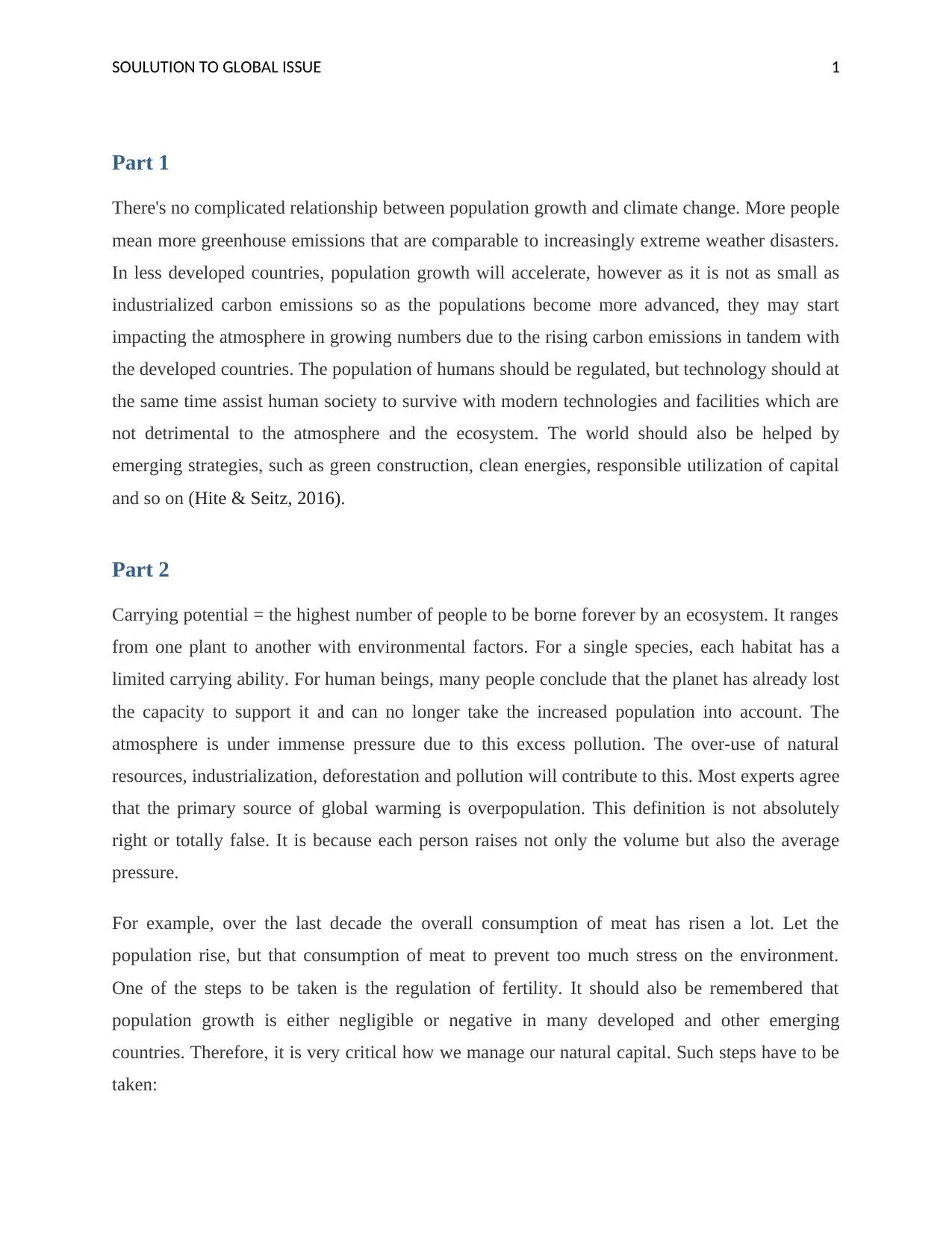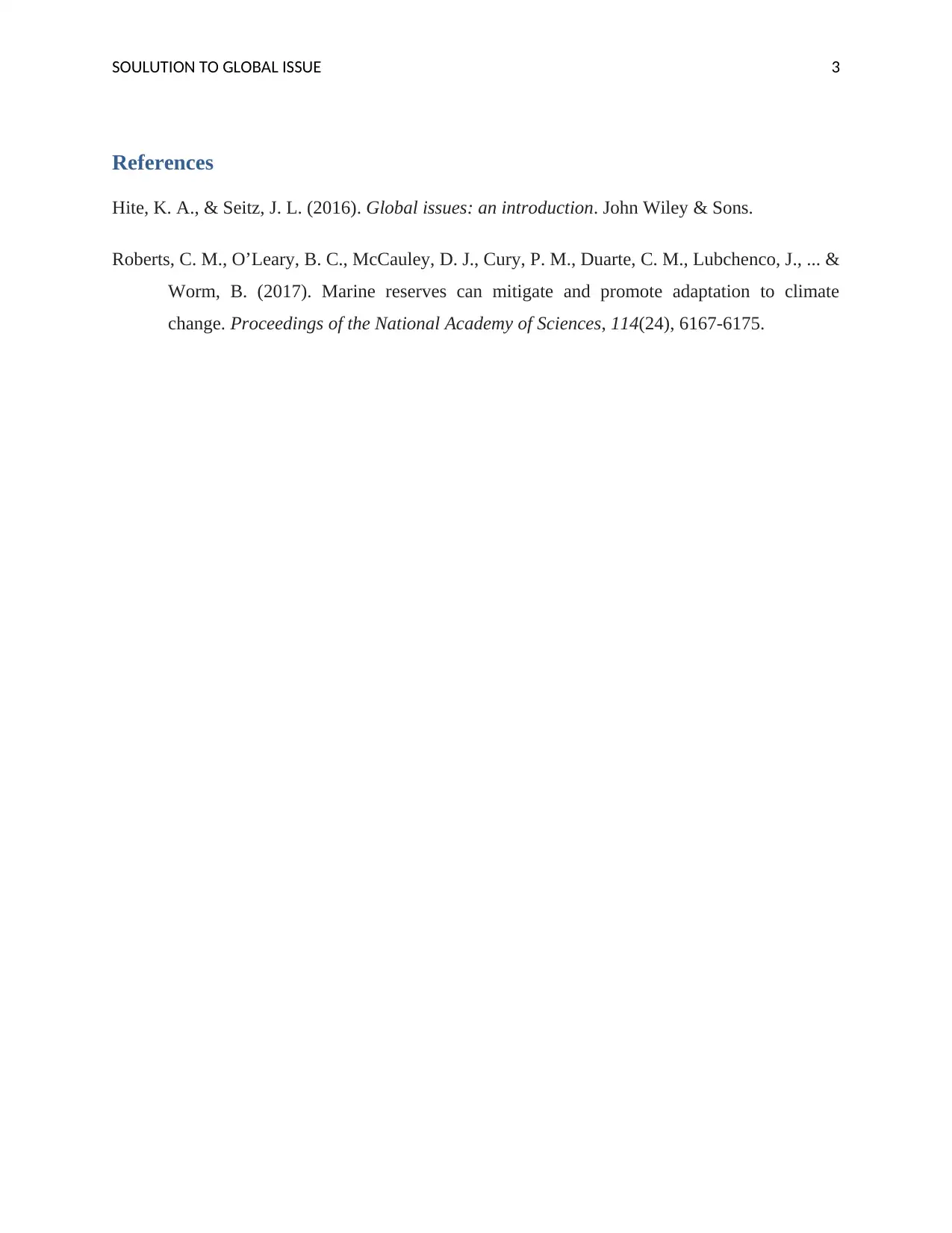Analyzing the Impact of Population on Climate Change: A Report
VerifiedAdded on 2022/09/27
|4
|521
|20
Report
AI Summary
This report investigates the intricate relationship between population growth and climate change, highlighting the impact of increasing greenhouse gas emissions. The report discusses the challenges posed by overpopulation, particularly in relation to the planet's carrying capacity and the strain on natural resources. It analyzes the role of industrialization, deforestation, and pollution in exacerbating global warming. The report also explores potential solutions, including the regulation of fertility, promoting afforestation, utilizing alternative energy sources such as solar and wind power, and encouraging the adoption of electric vehicles. The report emphasizes the importance of managing natural resources responsibly and reducing meat consumption to mitigate environmental impact. The references include works by Hite & Seitz (2016) and Roberts et al. (2017), providing a foundation for the analysis of global issues and potential solutions.
1 out of 4











![[object Object]](/_next/static/media/star-bottom.7253800d.svg)